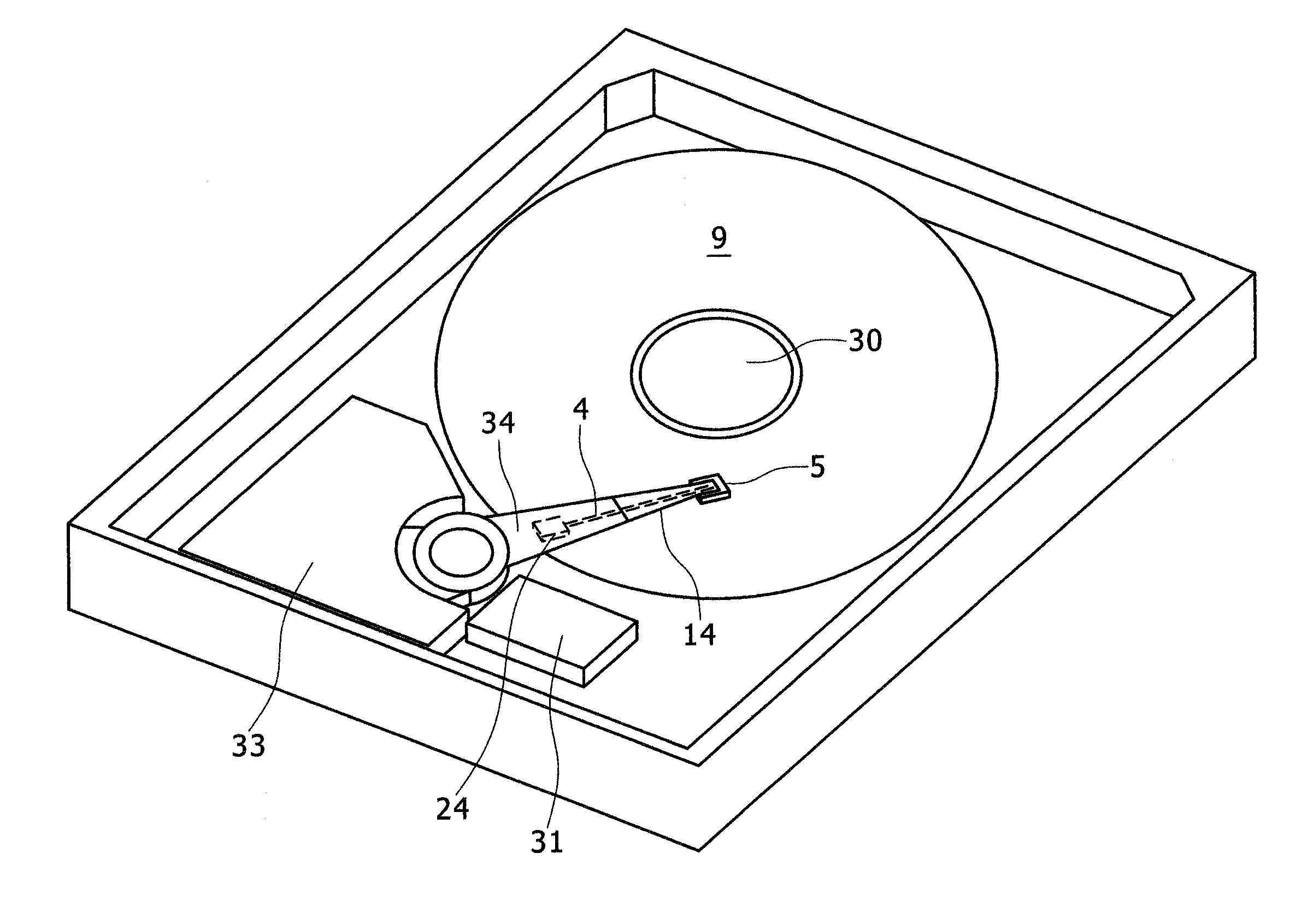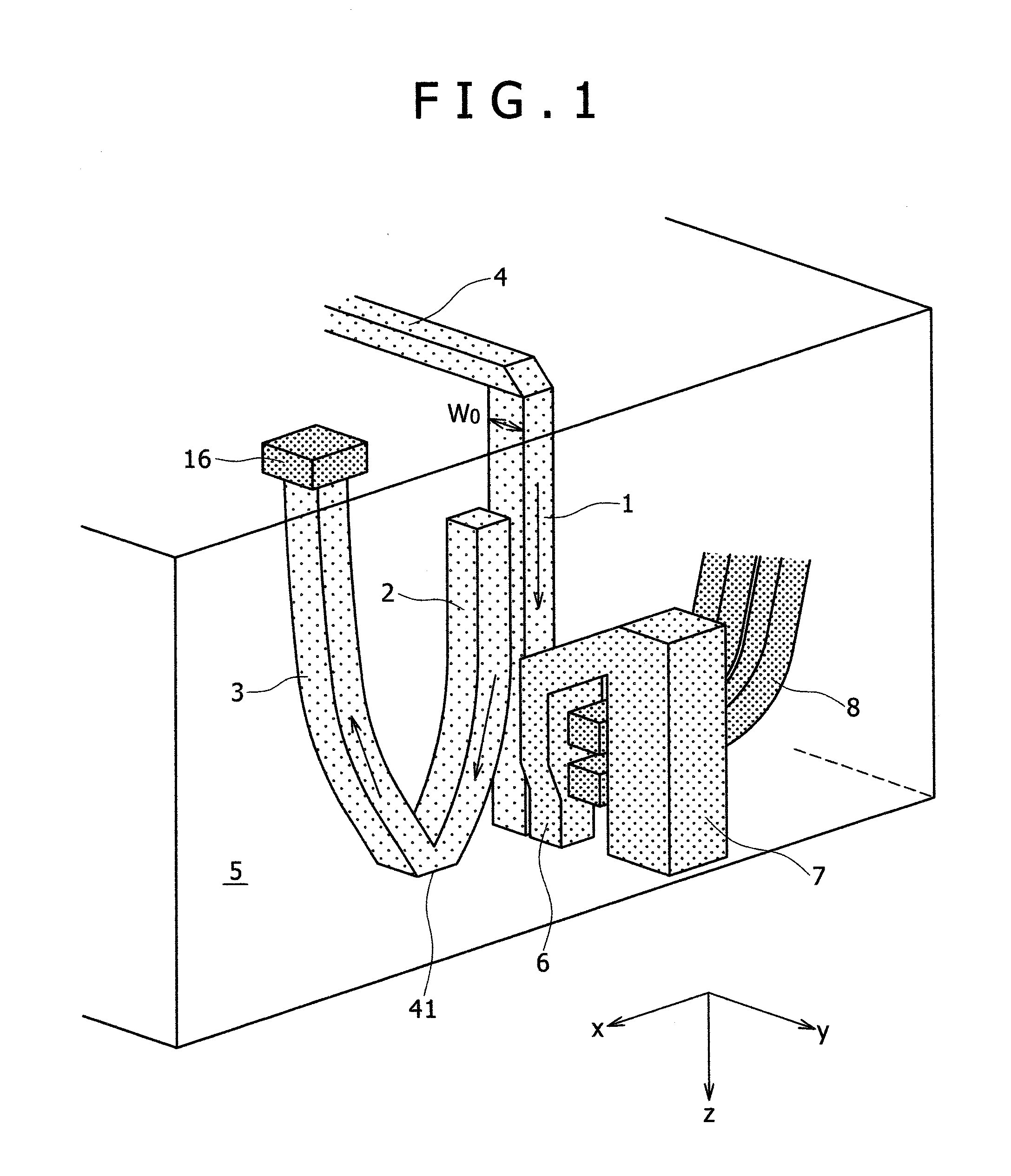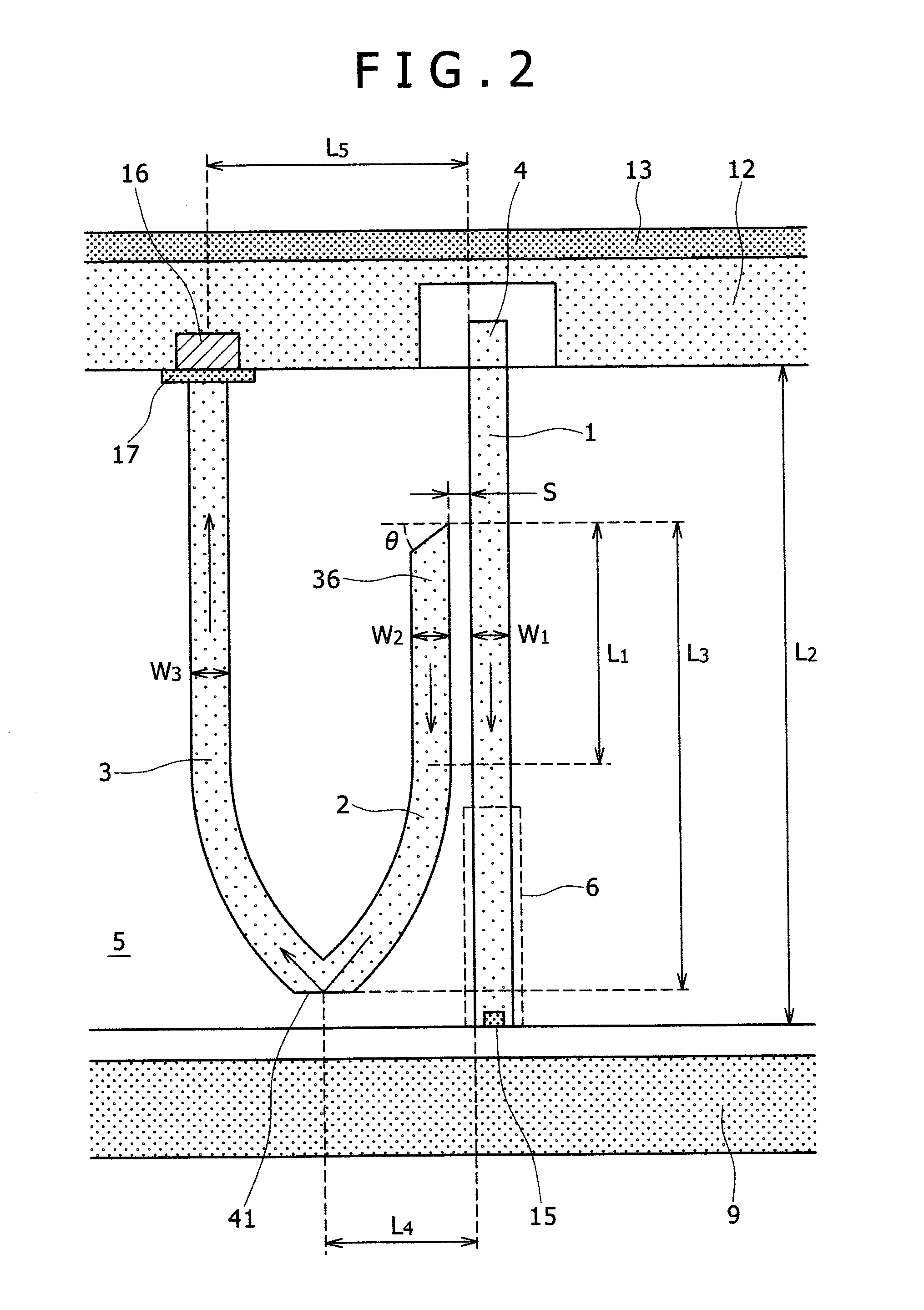Thermally Assisted Magnetic Recording Head And Magnetic Recording Apparatus
a technology of magnetic recording and magnetic recoding, which is applied in the field of thermally assisted magnetic recoding head and magnetic recording apparatus, to achieve the effects of suppressing the fluctuation of optical power, enhancing coupling efficiency, and enhancing coupling efficiency
- Summary
- Abstract
- Description
- Claims
- Application Information
AI Technical Summary
Benefits of technology
Problems solved by technology
Method used
Image
Examples
Embodiment Construction
[0059]Preferred embodiments of the present invention are to be described with reference to the drawings.
[0060]FIGS. 3A and 3B show an entire view of a thermally assisted magnetic recording head according to the invention. FIG. 3A is a side elevational view for a flying slider and FIG. 3B shows an entire view of a suspension and a slider. A semiconductor laser 25 at a wavelength of 780 nm is utilized as a light source and the semiconductor laser 25 is placed on an arm 34 as shown in FIG. 3B. Light generated from the semiconductor laser 25 is guided by utilizing a waveguide 4 to a flying slider 5. As the waveguide 4, an optical fiber formed of an organic waveguide or glass is utilized. A coupling lens 23 is disposed between the semiconductor laser 25 and the waveguide 4 to couple the light from the semiconductor laser to the waveguide 4. The semiconductor laser and the coupling lens are fabricated in a thin package 24. The end 4a of the waveguide 4 on the side opposite to the light so...
PUM
| Property | Measurement | Unit |
|---|---|---|
| diameter | aaaaa | aaaaa |
| temperature | aaaaa | aaaaa |
| temperature | aaaaa | aaaaa |
Abstract
Description
Claims
Application Information
 Login to View More
Login to View More - R&D
- Intellectual Property
- Life Sciences
- Materials
- Tech Scout
- Unparalleled Data Quality
- Higher Quality Content
- 60% Fewer Hallucinations
Browse by: Latest US Patents, China's latest patents, Technical Efficacy Thesaurus, Application Domain, Technology Topic, Popular Technical Reports.
© 2025 PatSnap. All rights reserved.Legal|Privacy policy|Modern Slavery Act Transparency Statement|Sitemap|About US| Contact US: help@patsnap.com



